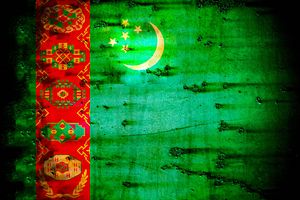Earlier this week, Crossroads Asia took a look at the current, and declining, state of affairs within the China-Central Asia gas pipeline network. As the recent news out of Kyrgyz media indicated, the final leg of the network–the Line D pipeline that would tether Kyrgyzstan and Tajikistan to the project–appears effectively stalled, confirming news out of Uzbekistan earlier this year.
As the news of Line D’s delay hit, though, Beijing offered a bit more context as to how the delay may affect China’s regional gas imports, and what the current state of affairs mean for Turkmenistan, the country that supplies the pipeline network. As flagged by Natural Gas Europe, China National Petroleum Corporation (CNPC) announced last week that, since 2009, Chinese imports of Turkmen gas had totaled nearly 140 billion cubic meters. China–which supplanted Russia as the primary export destination for Turkmenistan’s massive gas reserves around 2011–has seen incremental increases in Turkmen gas imports over the past three years, rising from 25.9bcm in 2014 for 28bcm in 2015. According to the report, Turkmenistan “expects to deliver” 30bcm to Beijing by the end of this year.
With Line D’s delay, though, the plans for continued expansion have been put on ice. As Natural Gas Europe added, Turkmenistan had announced aims of exporting some 180bcm annually by 2030, effectively quadrupling its prior peak during the post-Soviet period. As with many other Central Asian 2030 projections–see, for instance, Kazakhstan’s goals of becoming trilingual–such plans always seemed less credulous than Ashgabat would have wanted. And now, in light of the continued struggles of the TAPI pipeline, these projections seem more fanciful than perhaps any moment prior.
The Natural Gas Europe report goes on to offer a potential out for Turkmenistan, however. As the piece notes, “Azerbaijan’s energy minister Natig Aliev says Baku and Ashgabat are negotiating a deal to enable Turkmenistan to supply gas to the European Union through the Southern Gas Corridor.” Per Aliev, Baku and Ashgabat have explored both a Trans-Caspian pipeline and “lining the platforms in [the] Caspian Sea through undersea pipelines.” These plans could see Turkmenistan route some 30bcm of gas to European customers. Considering Marcos Sefcovic, the European Commission vice president, has already pledged European receipt of Turkmen fuel by 2019, Aliev’s comments carry weight.
Still, at this point, a Trans-Caspian pipeline stands as likely for completion as TAPI or Line D – perhaps even less so. Not only does Russia remain averse to watching a new pipeline bypass its domestic network to Europe–hence, the Caspian’s ongoing difficulties in determining its status as either a sea or a lake–but now, with Iranian exports coming online, Ashgabat has another market competitor.
The chatter between Ashgabat and Baku signals just how far the two have come since the 2012 rhetoric of war, but it remains just that: chatter. In the interim, the ever-cycling rotation of ministers and scapegoats will almost certainly continue. And the goal of reaching 180bcm in exports by 2030, just like the myriad pipeline projects Ashgabat would seek to complete, will remain relegated to paper dreams, at least for the foreseeable future.

































